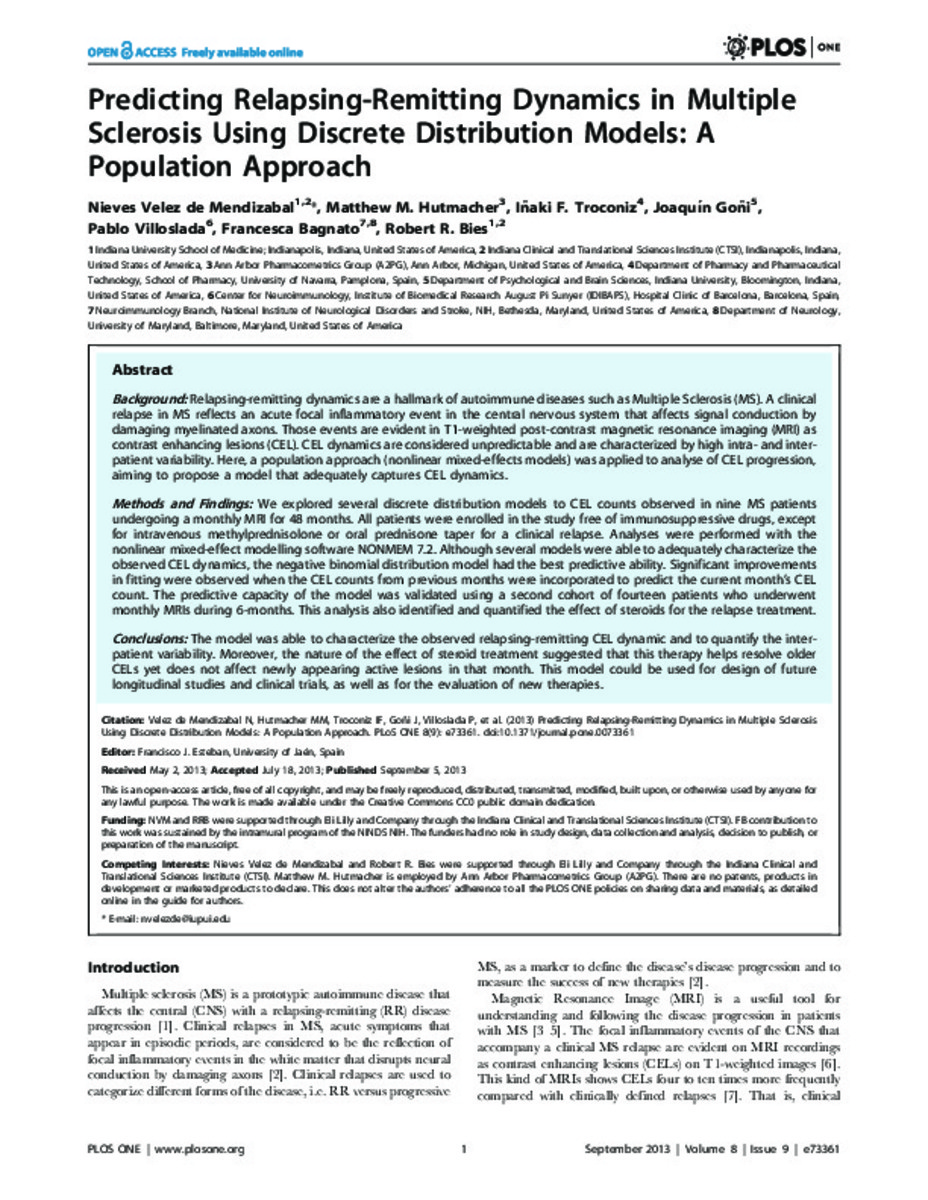Predicting relapsing-remitting dynamics in multiple sclerosis using discrete distribution models: a population approach
Palabras clave :
Multiple Sclerosis
Steroid
contrast enhancing lesions
Materias Investigacion::Farmacia::Tecnología farmacéutica
Fecha de publicación :
2013
Editorial :
Public Library of Science
Cita:
Velez de Mendizabal N, Hutmacher MM, Troconiz IF, Goni J, Villoslada P, Bagnato F, et al. Predicting relapsing-remitting dynamics in multiple sclerosis using discrete distribution models: a population approach. PloS one 2013 2013;8(9):e73361
Aparece en las colecciones:
Estadísticas e impacto
0 citas en

Los ítems de Dadun están protegidos por copyright, con todos los derechos reservados, a menos que se indique lo contrario.







